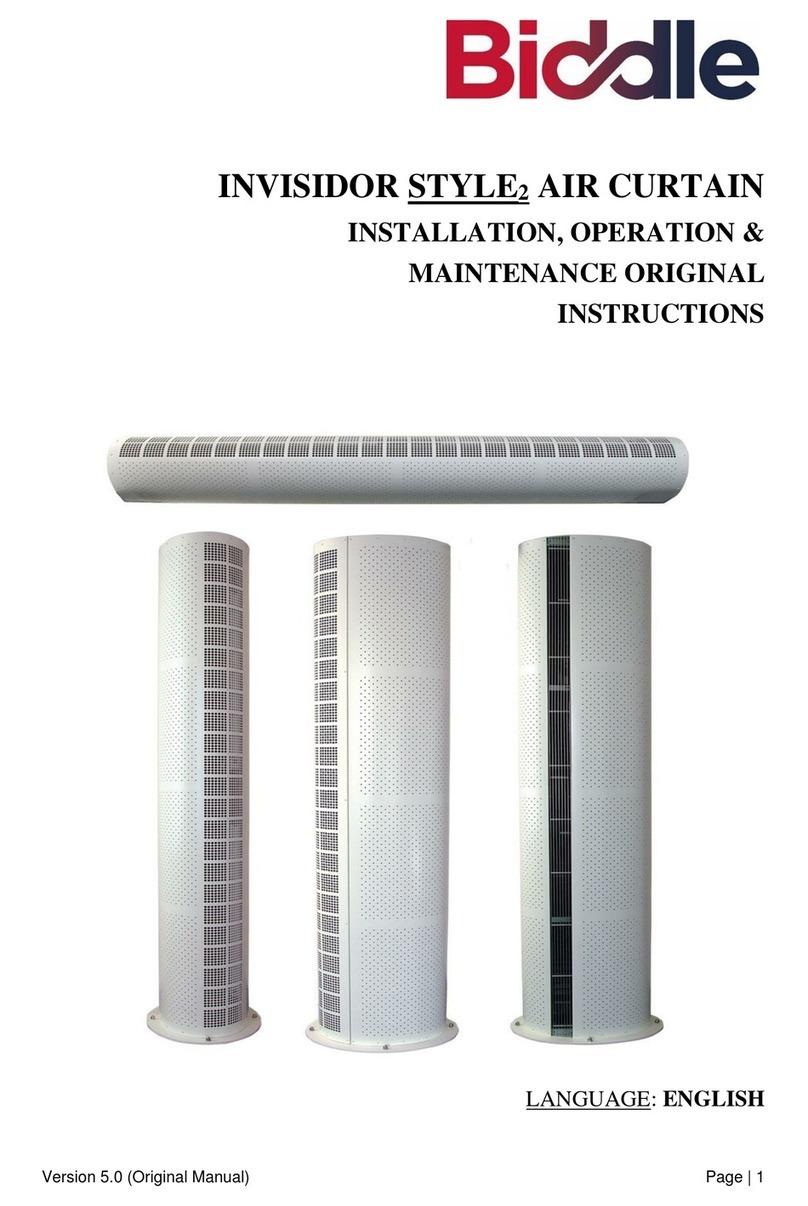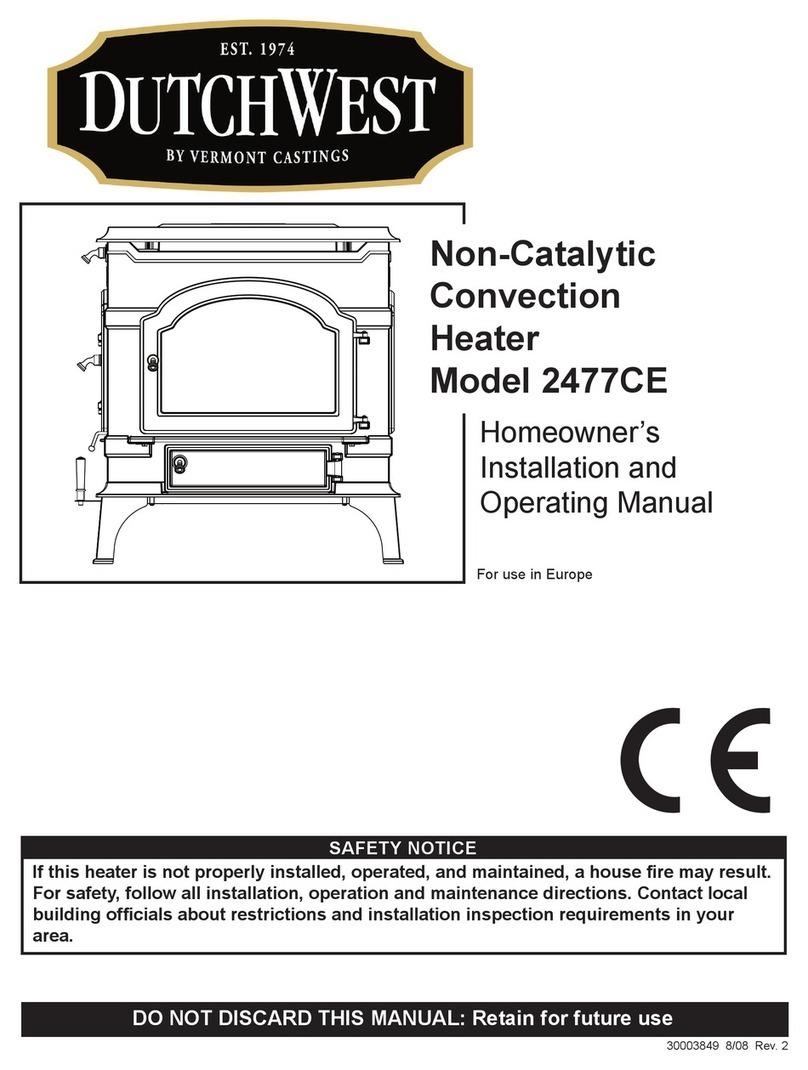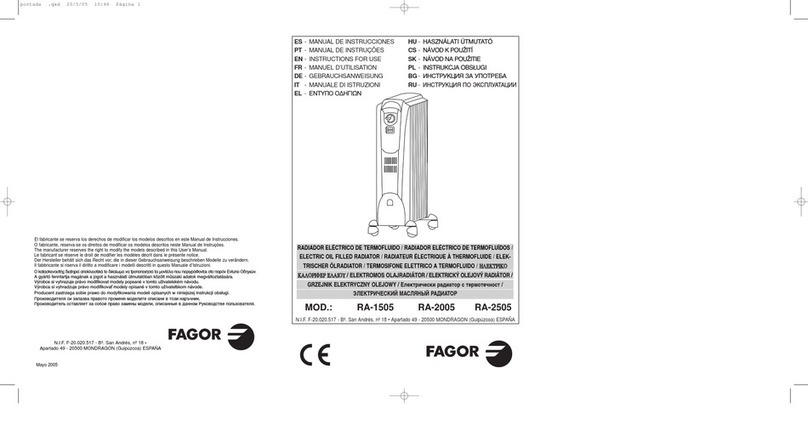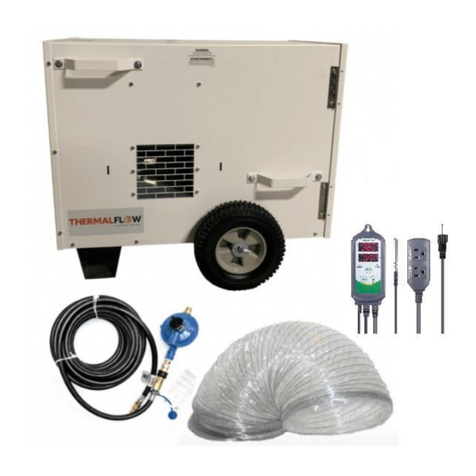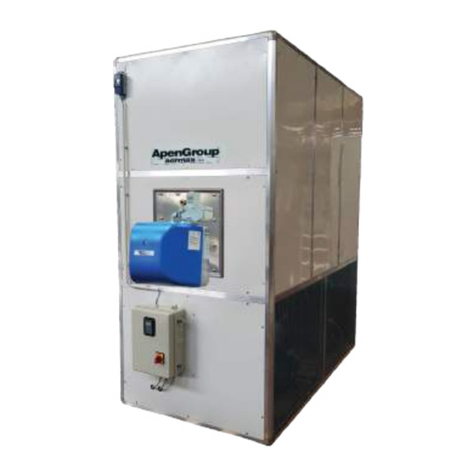
appliance may be used in different ambient conditions
You can use the appliance in
Household, warehouses and
workshops, building sites or
greenhouses
Household, warehouses and
workshops or greenhouses
Household, warehouses and
workshops
Building sites or greenhouses
5.2 When using electrical appliance basic precautions should always be followed including below:
5.2.1 The fan heater is not suitable for use outdoors in damp weather, in bathrooms or in other wet
or damp environments.
5.2.2 Please note that the fan heater can become very hot and should, therefore, be placed at a safe
distance from flammable objects such as furniture, curtains and similar.
5.2.3 Do not cover the fan heater.
5.2.4 The fan heater must not be located immediately below a wall socket.
5.2.5 Do not connect the fan heater using an on/off timer or other equipment which can automatically
switch the device on.
5.2.6 The fan heater must not be placed in rooms where flammable liquids or gases are used or
stored.
5.2.7 If an extension cord is used, it must be as short as possible and always be fully extended.
5.2.8 You must not connect other appliances to the same mains socket as the fan heater.
5.2.9 Do not use this fan heater in the immediate surroundings of a bath, a shower or a swimming
pool
5.2.10 If the supply cord is damaged, it must be replaced by the manufacturer, its service agent or
similarly qualified persons in order to avoid a hazard.
5.2.11 Make sure heater is always under surveillance and keep children and animals away from it;
5.2.12 Do not place the appliance on moving vehicles or some where easy to be tipped over .
5.2.13 When you don’t use the appliance for a long time, unplug the appliance .Don’t leave the
heater for a considerable amount of time when in use. Pull the plug straight out ,never remove the
plug by pulling on the cord .
5.2.14 Keep the heater far from curtain or places where the air inlet can easily be blocked.
5.2.15 The power coupler is waterproof when not in sue. In order to prevent possible electric shock
or leakage current ,never use the appliance with wet hand or operate the appliance when there is
water on the power cord.
5.2.16 Do not dispose of electrical appliances as unsorted municipal waste, use separate collection
facilities. Contact you local government for information regarding the collection systems available. If
electrical appliance are disposed of in landfills or dumps, hazardous substances can leak into the
groundwater and get into the food chain, damaging your health and well-being.
5.2.17 This appliance is not intended for use by persons (including children) with reduced physical,
sensory or mental capabilities, or lack of experience and knowledge, unless they have been given
supervision or instruction concerning use of the appliance by a person responsible for their safety.
5.2.18 Children should be supervised to ensure that they do not play with the appliance.
6. Using Instructions
6.1 Position the fan heater so that it stands upright on a firm surface and at a safe distance from wet
environments and flammable objects.
6.2 Connect the fan heater to the mains.
6.3 Set the thermostat knob to the MAX and let the heater operate with full power.
6.4 The fan heater will switch on when the heating selector is set to one of the power settings.
6.5 Once the room reaches the required temperature, heating element will stop working but fan also
working .Once the temperature decreased, the heating element will be working. The fan heater now
starts and stops automatically and thus keeps the room temperature constant.
6.6 Before switch off the heater, please turn the thermostat to MIN position and turn the switch to fan
position, let the appliance cool down for two minutes then turn off the heater and pull out the plug.
7. Cleaning and Maintenance
7.1 Before cleaning the appliance, disconnect it from the socket and let it cool down. The enclosure
is easily to get dirty, wipe it often with soft sponge. For every dirty parts, wipe with a sponge dipped
in <50°C water and mild detergent, then dry the heater enclosure with clean cloth. Be careful not to
let the water enter the appliance inner. Don’t splash water onto the heater, never use solvent like
gasoline etc. to clean the heater, in order to protect the enclosure.
7.2 Clean the cord and plug, dry and pack it in a plastic bag.





